
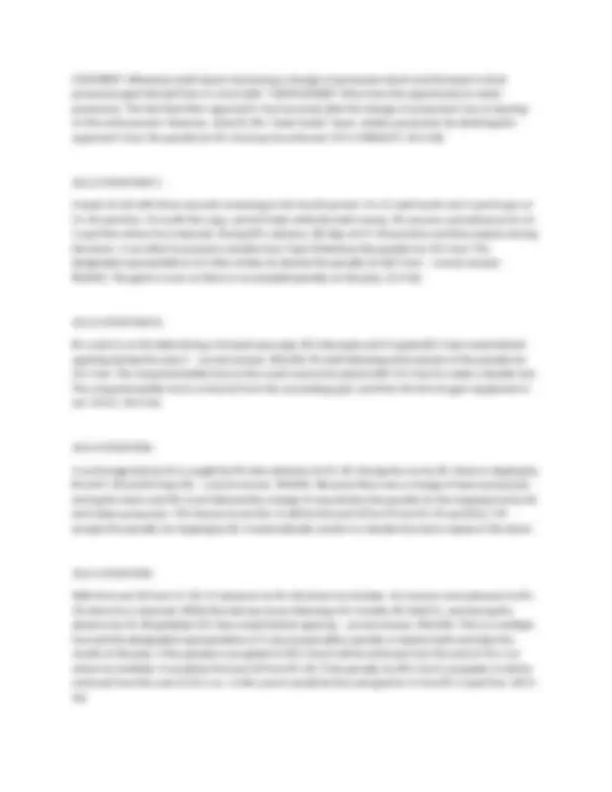
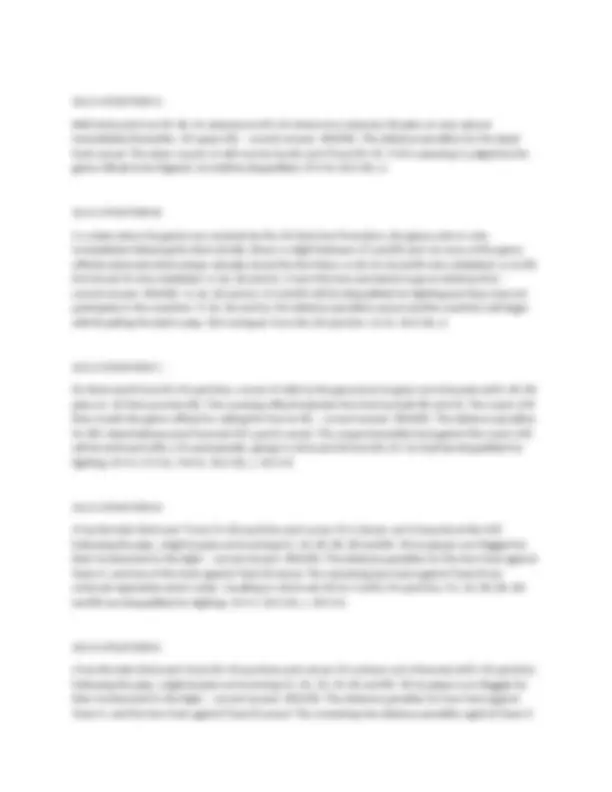
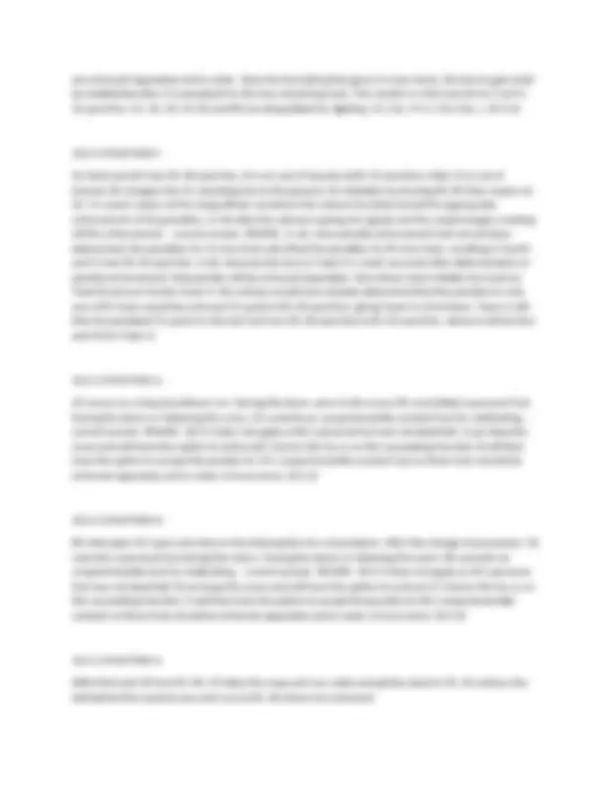
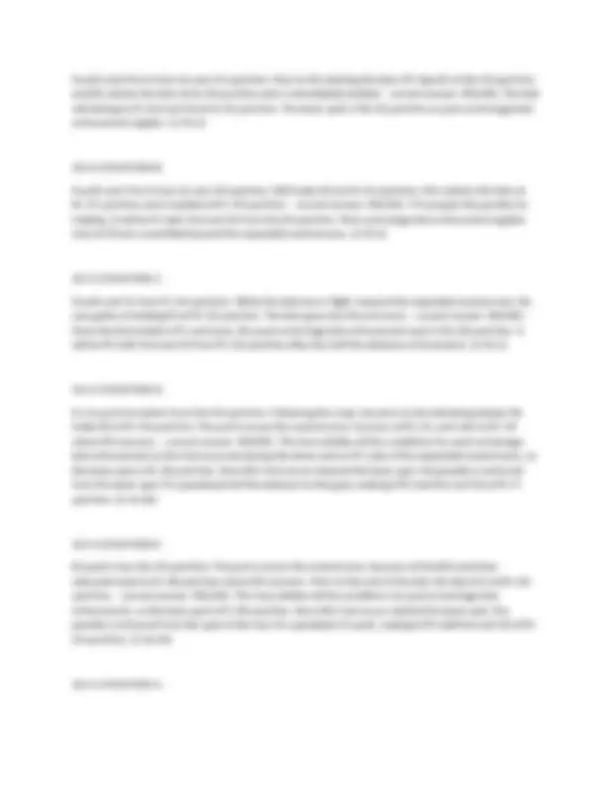
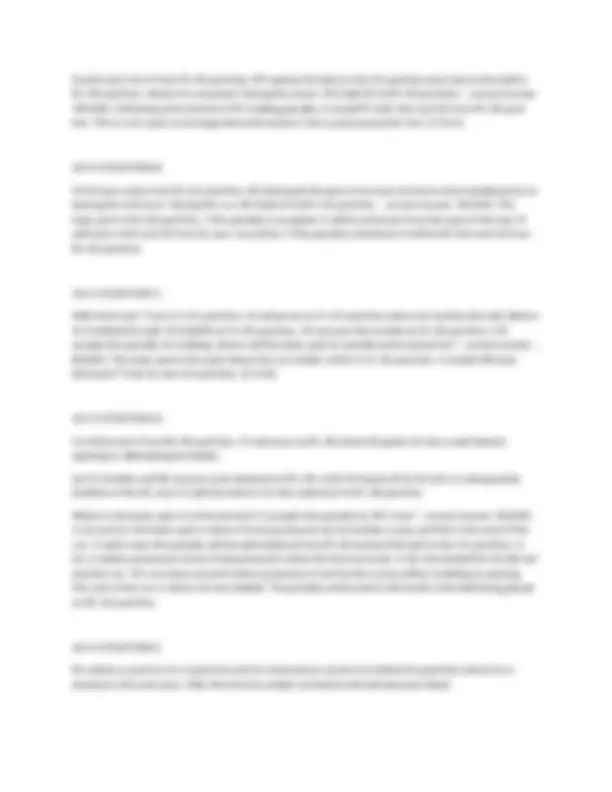
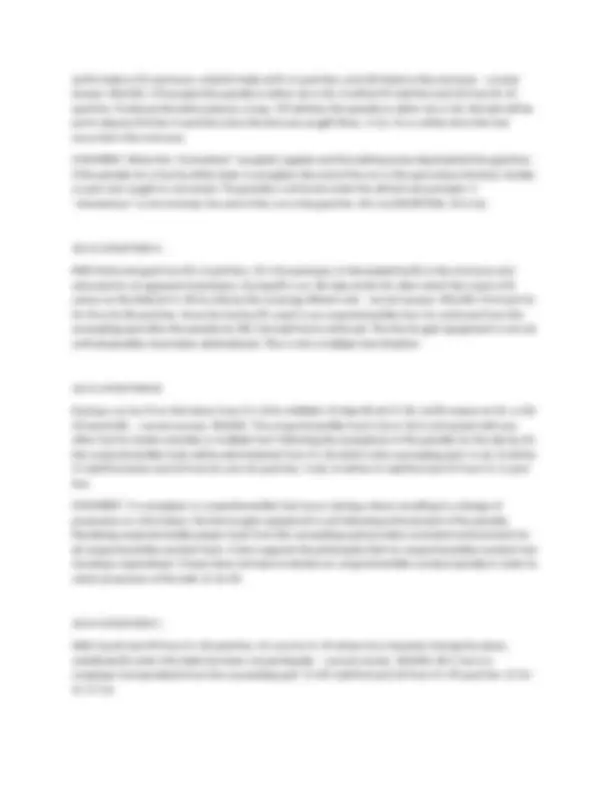
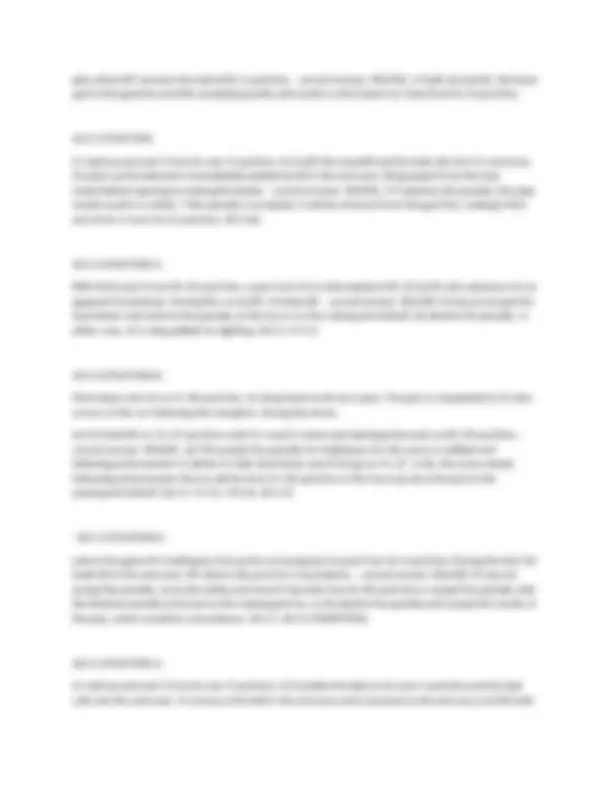
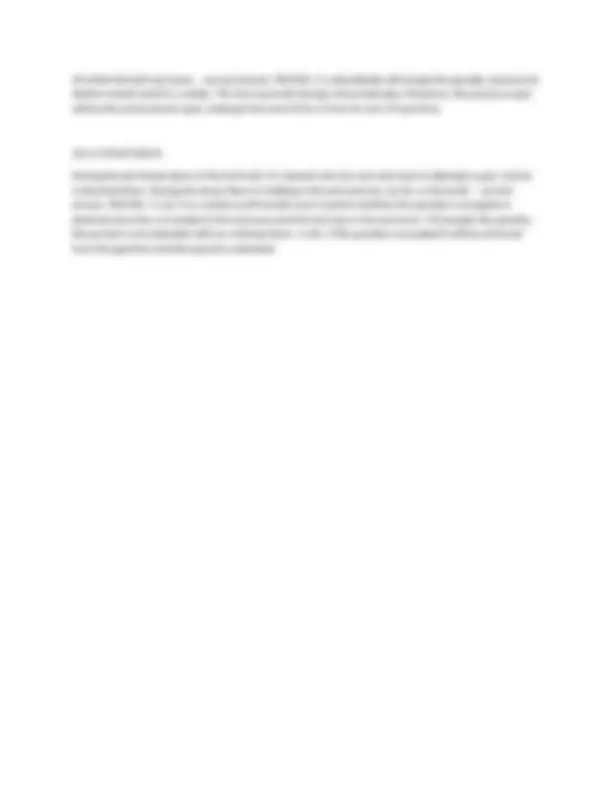


Study with the several resources on Docsity

Earn points by helping other students or get them with a premium plan


Prepare for your exams
Study with the several resources on Docsity

Earn points to download
Earn points by helping other students or get them with a premium plan
Community
Ask the community for help and clear up your study doubts
Discover the best universities in your country according to Docsity users
Free resources
Download our free guides on studying techniques, anxiety management strategies, and thesis advice from Docsity tutors
Various scenarios related to penalty enforcement in american football. It covers situations where there are multiple fouls during a play, including illegal motion, holding, face mask/helmet opening violations, and unsportsmanlike conduct. Detailed rulings on where the ball should be spotted following penalty acceptance, depending on factors such as the type of foul, the location of the foul, and whether there was a change of possession. The document also addresses situations involving fights, backward passes, and interceptions. Overall, this document provides a comprehensive overview of the complex rules and procedures surrounding penalty enforcement in american football.
Typology: Exams
1 / 14

This page cannot be seen from the preview
Don't miss anything!









Where is the ball spotted following penalty acceptance when it is snapped from the right-side hash mark and the run ends in the left-side zone and the foul is: (a) illegal motion by A1; or(b) holding by A1 in the middle of the field behind the end of the run; or(c) grasping the face mask/helmet opening by B1 in making the tackle? - correct answer -RULING: In (a), it is spotted at the right-side hash mark. In (b), it is spotted in the middle of the field since the enforcement spot was the spot of the foul. In (c), it is spotted at the left hash mark. 10.1.1 SITUATION B: B1 holds A1 during an unsuccessful try. A's designated representative wants to accept the penalty and replay of the down, but wishes to decline the distance penalty because A's kicker is more comfortable kicking from the previous distance. - correct answer -RULING: This is a legal request. The distance penalty for any foul may be declined. *10.1.3 SITUATION: With fourth and 10 at the 50-yard line, K2 illegally uses his hands at R's 45-yard line during a scrimmage kick by K1. R1 signals for a fair catch at the R30. The ball is caught by R2 who advances following the whistle. - correct answer -RULING: R may accept the distance penalty for K's illegal use of hands and have the yardage assessed from the previous spot or the succeeding spot. At this point, K is given the options related to R's foul and will likely accept the distance penalty for R's delay of game foul. (3-6-2b, 10-2-3, 10-4-2 EXCEPTION) 10.2.1 SITUATION A: During a run by A1, A2 is holding B1. Thereafter, a fumble by A1 is recovered by B2 who advances for a touchdown. While the ball was loose during the fumble, B3 clipped A3. - correct answer -RULING: Double foul. Both fouls occurred before the change of team possession and the action thus constitutes a double foul. The penalties cancel and the down shall be replayed. (10-2-2) 10.2.1 SITUATION B:
K1 is in an illegal position and the scrimmage kick by K2 is caught by R1. During the return by R1, there is clipping by R2 and a subsequent fumble by R1 is recovered by K3. - correct answer -RULING: Double foul. Even though there was a change of team possession during the down, the team gaining final possession had fouled before gaining possession. Both fouls occurred during the down and the result is a double foul. The penalties cancel and the down shall be replayed. (10-2-2) 10.2.1 SITUATION C: With fourth and 15 from midfield, K is called for illegal formation. R1 catches K1's punt, but is tackled by the face mask/helmet opening by K2. R2 strikes K3 prior to the end of the run. - correct answer -RULING: If R accepts the penalty for either foul by K, it is a double foul. R may decline the penalties and retain possession following enforcement of the penalty for R2's foul. In either case, R2 shall be disqualified. (9- 4-3h, 10-2-3) 10.2.1 SITUATION D: Fourth and five from K's 20-yard line, K is in an illegal formation at the snap. While K1's punt is in flight, beyond the expanded neutral zone, R2 blocks K8 in the back at the 50-yard line. R4 catches the kick at R's 36-yard line and returns it for a touchdown. - correct answer -RULING: This is a post-scrimmage kick foul by R. Therefore, R may decline the penalty for K's foul and keep the ball after enforcement of the 10-yard penalty for the block in the back, or it may accept the penalty against K, thereby creating a double foul in which case the down shall be replayed. (10-2-1b) 10.2.2 SITUATION A: During a legal forward pass which crosses the neutral zone, A1 is illegally in motion at the snap. B intercepts and during his return, B2 clips A2. - correct answer -RULING: The illegal motion by A1 and the clipping by B2 are both live-ball fouls, but because the foul by B2 followed a change of team possession, they do not automatically constitute a double foul. The designated representative of B (last team in possession) may accept or decline the penalty for A's foul. If accepted, this creates a double foul and the down is replayed. If declined, then the penalty for B's foul is enforced if accepted by A. (10-1-3, 10-2-1b) 10.2.2 SITUATION B: A1's pass is intercepted by B1 at B's 40-yard line. During B1's return, A1 and B2 begin fighting at A's 40- yard line. B1 returns the ball to A's 2-yard line. - correct answer -RULING: The designated representative of B (last team in possession) may accept or decline the penalty for A's foul. If B accepts the penalty for A1's foul, it creates a double foul. B may retain possession by declining the penalty for A1's foul, in which case, it would be B's ball at its own 45-yard line following enforcement of B's penalty (if accepted by A). Both A1 and B2 will be disqualified for fighting.
With third and 8 on B's 40, A1 advances to B's 35 where he is downed. B1 piles on and, almost immediately thereafter, A2 spears B1. - correct answer -RULING: The distance penalties for the dead fouls cancel. The down counts; it will now be fourth and 3 from B's 35. If A2's spearing is judged by the game official to be flagrant, he shall be disqualified. (9-4-3i; 10-2-5b, c) 10.2.5 SITUATION B: In a state where tie games are resolved by the 10-Yard Line Procedure, the game ends in a tie. Immediately following the final whistle, there is a fight between A1 and B1 and: (a) none of the game officials observed which player actually struck the first blow; or (b) A1 struck B1 who retaliated; or (c) B first struck A1 who retaliated. In (a), (b) and (c), A wins the toss and elects to go on defense first. - correct answer -RULING: In (a), (b) and (c), A1 and B1 will be disqualified for fighting and they may not participate in the overtime. In (a), (b) and (c), the distance penalties cancel and the overtime will begin with B putting the ball in play, first and goal, from the 10-yard line. (2-11; 10-2-5b, c) 10.2.5 SITUATION C: On third and 8 from B's 45-yard line, runner A1 falls to the ground as he goes out of bounds at B's 40. B piles on. A2 then punches B2. The covering official indicates the fouls by both B1 and A2. The coach of B then insults the game official for calling the foul on B1. - correct answer -RULING: The distance penalties for B1's dead-ball personal foul and A2's punch cancel. The unsportsmanlike foul against the coach of B will be enforced with a 15-yard penalty, giving A a first and 10 from B's 25. A2 shall be disqualified for fighting. (9-4-1; 9-4-3c; 9-8-1c; 10-2-5b, c; 10-4-4) 10.2.5 SITUATION D: A has the ball, third and 7 from A's 20-yard line and runner A1 is driven out of bounds at the A25. Following the play, a fight breaks out involving A1, A2, B1, B2, B3 and B4. All six players are flagged for their involvement in the fight. - correct answer -RULING: The distance penalties for the two fouls against Team A, and two of the fouls against Team B cancel. The remaining two fouls against Team B are enforced separately and in order, resulting in a first and 10 for A at B's 45-yard line. A1, A2, B1, B2, B and B4 are disqualified for fighting. (9-4-1; 10-2-5b, c; 10-4-4) 10.2.5 SITUATION E: A has the ball, third and 6 from B's 45-yard line and runner A1 is driven out of bounds at B's 35-yard line. Following the play, a fight breaks out involving A1, A2, A3, A4, B1 and B2. All six players are flagged for their involvement in the fight. - correct answer -RULING: The distance penalties for two fouls against Team A, and the two fouls against Team B cancel. The remaining two distance penalties against Team A
are enforced separately and in order. Since the live-ball action gave A a new series, the line to gain shall be established after A is penalized for the two remaining fouls. This results in a first and 10 for A at A's 35-yard line. A1, A2, A3, A4, B1 and B2 are disqualified for fighting. (5-1-2a, 9-4-1, 10-2-5b, c; 10-4-4) 10.2.5 SITUATION F: On third and 10 from B's 40-yard line, A1 runs out of bounds at B's 35-yard line. After A1 is out of bounds, B1 charges into A1, knocking him to the ground. A2 retaliates by shoving B1. B1 then swears at A2. A's coach swears at the wing official: (a) before the referee has determined the appropriate enforcement of the penalties; or (b) after the referee is giving his signals and the umpire begins marking off the enforcement. - correct answer -RULING: In (a), since penalty enforcement had not yet been determined, the penalties for A's two fouls will offset the penalties for B's two fouls, resulting in fourth and 5 from B's 35-yard line. In (b), because the foul on Team A's coach occurred after determination of penalty enforcement, that penalty will be enforced separately. Since there were initially two fouls by Team B and one foul by Team A, the referee would have already determined that the penalty for only one of B's fouls would be enforced 15 yards to B's 20-yard line, giving Team A a first down. Team A will then be penalized 15 yards for the last foul from B's 20-yard line to B's 35-yard line, where it will be first and 10 for Team A. 10.2.5 SITUATION G: A1 scores on a long touchdown run. During the down, prior to the score, B1 committed a personal foul. During the down or following the score, A1 commits an unsportsmanlike conduct foul for celebrating. - correct answer -RULING: 10-2-5 does not apply as B1's personal foul was not dead ball. A can keep the score and will have the option to enforce B's foul on the try or on the succeeding free kick. B will then have the option to accept the penalty for A1's unsportsmanlike conduct foul as these fouls should be enforced separately and in order of occurrence. (8-2-2) 10.2.5 SITUATION H: B1 intercepts A1's pass and returns the interception for a touchdown. After the change of possession, A commits a personal foul during the return. During the down or following the score, B1 commits an unsportsmanlike foul for celebrating. - correct answer -RULING: 10-2-5 does not apply as A2's personal foul was not dead ball. B can keep the score and will have the option to enforce A's foul on the try or on the succeeding free kick. A will then have the option to accept the penalty for B1's unsportsmanlike conduct as these fouls should be enforced separately and in order of occurrence. (8-2-3) 10.3.1 SITUATION A: With third and 10 from B's 40, A1 takes the snap and runs wide and pitches back to A2. A2 catches the ball behind the neutral zone and runs to B's 10 where he is downed.
During a scrimmage down, quarterback A1 throws a backward pass to A2 who runs about 30 yards behind the neutral zone and toward the sideline before throwing a forward pass downfield. There is holding by A3: (a) during the backward pass; or (b) during the run which preceded the forward pass; or (c) during the forward pass at the line of scrimmage. - correct answer -RULING: It is a loose-ball play in (a), (b) and (c). The basic spot in all three cases is the previous spot. COMMENT: All the action which preceded A2's forward pass is included in this single loose-ball play. While it is possible to have several running plays during a down, with each one having its own basic spot of enforcement (where the related run ended), there can only be one loose ball play during a down. Rule 10-3-1 NOTE states: "The run(s) which precedes such legal or illegal kick, legal forward pass, backward pass or fumble is (are) considered part of the action during a loose-ball play." This means it includes all action from the time of the snap to the end of the "loose-ball play." When any foul occurs during a free kick, scrimmage kick, legal forward pass, backward pass (including the snap) or fumble made by A from in or behind the neutral zone...even if several of these actions happen during the same down...the basic spot remains the same, the previous spot which is the spot of the snap or free kick. (10- 3-1 NOTE) 10.4.2 SITUATION C: On third and 20 from his own 35-yard line, A1 throws a forward pass to A2. Prior to the catch, B1 is detected holding. A2 advances to B's 45 following the catch. - correct answer -RULING: B1's foul occurred during a loose-ball play and if the penalty is accepted it will be enforced from the previous spot. A obviously will decline the penalty since it has gained 10 yards more and has a first down. The holding penalty cannot be added to the end of the run because the foul was committed during the loose-ball play. (10-3-1b, 10-4-2b) 10.4.2 SITUATION D: A1 behind the neutral zone has the ball batted from his possession by B1. While the ball is loose: (a) A holds B1, or (b) B2 grasps A2's face mask/helmet opening. - correct answer -RULING: Since A1 lost possession, the status of the ball is the same as if it had been fumbled by A1, therefore fouls during this interval are fouls during a loose-ball play. In (a), the penalty is enforced from the previous spot if A1's foul was beyond the previous spot or from the spot of the foul if A1's foul was committed behind the previous spot. In (b), the penalty is enforced from the previous spot, regardless of where B1's foul occurred or where the down ends. 10.4.3 SITUATION A:
Fourth and 8 for K from its own 45-yard line. Prior to R2 catching the kick, R7 clips K5 at the 50-yard line and R2 catches the kick at his 20-yard line and is immediately tackled. - correct answer -RULING: The ball will belong to R, first and 10 at its 10-yard line. The basic spot is the 20-yard line as post-scrimmage kick enforcement applies. (2-41-6) 10.4.3 SITUATION B: Fourth and 9 for K from its own 40-yard line. R10 holds K11 at K's 42-yard line. R11 catches the kick at R's 25-yard line and is tackled at R's 29-yard line. - correct answer -RULING: If K accepts the penalty for holding, it will be K's ball, first and 10 from the 50-yard line. Post-scrimmage kick enforcement applies only to R fouls committed beyond the expanded neutral zone. (2-41-6) 10.4.3 SITUATION C: Fourth and 11 from K's 36-yard line. While the ball was in flight, beyond the expanded neutral zone, R was guilty of holding K3 at R's 32-yard line. The kick goes into the end zone. - correct answer -RULING: Since the kick ended in R's end zone, the post-scrimmage kick enforcement spot is the 20-yard line. It will be R's ball, first and 10 from R's 10-yard line after the half-the-distance enforcement. (2-41-6) 10.4.3 SITUATION D: K is in punt formation from the 50-yard line. Following the snap, but prior to the ball being kicked, R holds K4 at R's 46-yard line. The punt crosses the neutral zone, bounces at R's 25, and rolls to R's 18 where R4 recovers. - correct answer -RULING: This foul satisfies all the conditions for post-scrimmage kick enforcement as the foul occurred during the down and on R's side of the expanded neutral zone, so the basic spot is R's 18-yard line. Since R6's foul occurs beyond the basic spot, the penalty is enforced from the basic spot. R is penalized half the distance to the goal, making it R's ball first and 10 at R's 9- yard line. (2-16-2h) 10.4.3 SITUATION E: K2 punts from the 50-yard line. The punt crosses the neutral zone, bounces at the R45 and then rebounds back to K's 48-yard line where R4 recovers. Prior to the end of the kick, R6 clips K11 at R's 40- yard line. - correct answer -RULING: This foul satisfies all the conditions for post-scrimmage kick enforcement, so the basic spot is K's 48-yard line. Since R6's foul occurs behind the basic spot, the penalty is enforced from the spot of the foul. R is penalized 15 yards, making it R's ball first and 10 at R's 25-yard line. (2-16-2h) 10.4.4 SITUATION A:
(a) K1 holds in R's end zone; or(b) K1 holds at R's 5-yard line; or(c) R2 holds in the end zone. - correct answer -RULING: If R accepts the penalty in either (a) or (b), it will be R's ball first and 10 from its 14- yard line. R will put the ball in play by a snap. If R declines the penalty in either (a) or (b), the ball will be put in play by R at the 4-yard line since the kick was caught there. In (c), it is a safety since the foul occurred in the end zone. COMMENT: When the "momentum" exception applies and the ball becomes dead behind the goal line, if the penalty for a foul by either team is accepted, the end of the run is the spot where the kick, fumble or pass was caught or recovered. The penalty is enforced under the all-but-one principle. If "momentum" is not involved, the end of the run is the goal line. (8-5-2a EXCEPTION, 10-3-3c) 10.4.5 SITUATION A: With third and goal from B's 2-yard line, A1's forward pass is intercepted by B1 in the end zone and returned for an apparent touchdown. During B1's run, B2 clips at the 50, after which the coach of B comes on the field at A's 40 to criticize the covering official's call. - correct answer -RULING: First and 10 for B on its 20-yard line. Since the foul by B's coach is an unsportsmanlike foul, it is enforced from the succeeding spot after the penalty for B2's live-ball foul is enforced. The line-to-gain equipment is not set until all penalties have been administered. This is not a multiple-foul situation. 10.4.5 SITUATION B: During a run by A1 on first down from A's 10 to midfield, A2 clips B1 at A's 20. (a) B1 swears at A2; or (b) A3 taunts B2. - correct answer -RULING: The unsportsmanlike foul in (a) or (b) is not paired with any other foul to create a double or multiple foul. Following the acceptance of the penalty for the clip by A2, the unsportsmanlike fouls will be administered from A's 10 which is the succeeding spot. In (a), it will be A's ball first down and 10 from its own 25-yard line. In (b), it will be A's ball first and 15 from A's 5-yard line. COMMENT: If a nonplayer or unsportsmanlike foul occurs during a down resulting in a change of possession or a first down, the line-to-gain equipment is set following enforcement of the penalty. Penalizing unsportsmanlike-player fouls from the succeeding spot provides consistent enforcement for all unsportsmanlike-conduct fouls. It also supports the philosophy that no unsportsmanlike-conduct foul should go unpenalized. A team does not have to decline an unsportsmanlike-conduct penalty in order to retain possession of the ball. (2-16-2f) 10.4.5 SITUATION C: With fourth and 40 from A's 10-yard line, A1 runs to A's 44 where he is downed. During the down, substitute B1 enters the field, but does not participate. - correct answer -RULING: B1's foul is a nonplayer foul penalized from the succeeding spot. It is B's ball first and 10 from A's 49-yard line. (2-16- 2f, 3-7-6)
With the score, B-14 and A-8, a pass from A1 is complete in the end zone to A2 during the down in which time expires for the fourth period. During the down, there is holding by B1 and after the down, B is charged with an unsportsmanlike foul. - correct answer -RULING: A will undoubtedly accept the result of the play and enforce the holding penalty from the 3-yard line and enforce the penalty for the unsportsmanlike foul. The ball would then be snapped for the try from the ¾-yard line. (3-3-3a, 10-5-1f) 10.4.5 SITUATION E: A scores on the last play of the: (a) second period; or(b) fourth period, to make the score, B-21 and A-19. During A's successful 2-point try, B1 commits an unsportsmanlike foul. - correct answer -RULING: In (a), the penalty is enforced from the succeeding spot on the kickoff to start the third period. In (b), the penalty for B1's foul will be administered from the succeeding spot if an overtime is played. COMMENT: When a procedure for resolving ties is being used, the referee should explain the options very carefully to the captains and adesignated representatives at the time of the coin toss prior to the overtime period. For example, if the captain of B wins the choice, he may: (1) choose the end of the field in which the ball will be put in play or he may choose to go on; (2) offense; or (3) defense. Should he choose to go on offense first, B will put the ball in play first and goal from the 25-yard line. Should he choose to go on defense first, A will put the ball in play first and goal from the 5-yard line, which is half the distance from the spot of enforcement, if the penalty is accepted by the designated representative. If the captain of B chooses to designate the end of the field from which the ball will be put in play, the captain of A then will have the choice of going on offense or defense first. (2-41-9, 3-3-3d) 10.4.5 SITUATION F: After A1 scores a touchdown, he is struck by B1. The coach of A then insults a game official before the penalty for the personal foul by B1 is administered. - correct answer -RULING: The penalties for both the dead-ball personal foul by B1 and the unsportsmanlike foul by the coach of A will cancel. If B1's act was judged by the game official to be fighting, he shall be ejected. (2-41-10; 8-2-5; 8-3-2; 9-4-3b, g, j; 9-8-1c; 10-2-5b, c) 10.4.5 SITUATION G: A2 commits an unsportsmanlike dead-ball foul: (a) following a touchdown by A1; or (b) following a successful try. - correct answer -RULING: In (a), B is given the option of accepting the penalty enforcement on the try or the subsequent kick. In (b), the succeeding spot is the kickoff. COMMENT: If the try had been the last play of the game and the score was tied, the succeeding spot for enforcement of the penalty for the foul by A2 would be the start of the overtime procedure. If an
play where B7 recovers the ball at B's 5-yard line. - correct answer -RULING: In both (a) and (b), the basic spot is the goal line and the accepted penalty will result in a first down for Team B at its 15-yard line. 10.5.2 SITUATION: A's ball second and 5 from its own 9-yard line. A2 muffs the handoff and the ball rolls into A's end zone. A1 picks up the ball and is immediately tackled by B3 in the end zone. B3 grasped A1 by the face mask/helmet opening in making the tackle. - correct answer -RULING: If A declines the penalty, this play would result in a safety. If the penalty is accepted, it will be enforced from the goal line, making it first and 10 for A from its 15-yard line. (8-5-2b) 10.5.3 SITUATION A: With third and 6 from B's 35-yard line, a pass from A1 is intercepted at B's 25 by B1 who advances for an apparent touchdown. During the run by B1, A1 kicks B2. - correct answer -RULING: B may (a) accept the touchdown and enforce the penalty on the try or on the subsequent kickoff; (b) decline the penalty. In either case, A1 is disqualified for fighting. (8-2-3, 9-4-1) 10.5.3 SITUATION B: Third down and 12 on A's 40-yard line. A1 drops back to throw a pass. The pass is completed to A2 who scores on the run following the reception. During the down, (a) A3 holds B1 on A's 37-yard line or(b) A's coach is observed standing inbounds on B's 20-yard line. - correct answer -RULING: (a) If B accepts the penalty for holding by A3, the score is nullified and following enforcement, it will be A's ball, third down and 25 to go on A's 27. In (b), the score stands. Following enforcement, the try will be from A's 18-yard line or the foul may be enforced on the subsequent kickoff. (8-2-4, 9-2-1c, 9-8-1k, 10-5-3) *10.5.3 SITUATION C: Late in the game R is trailing by nine points as K prepares to punt from its 4-yard line. During the kick, K holds R4 in the end zone. R5 returns the punt for a touchdown. - correct answer -RULING: R may (a) accept the penalty, score the safety and have K free-kick from its 20-yard line or accept the penalty with the distance penalty enforced on the subsequent try; or (b) decline the penalty and accept the results of the play, which would be a touchdown. (8-2-3, 10-4-2 EXCEPTION) 10.5.4 SITUATION A: A's ball second and 5 from its own 9-yard line. A2 fumbles the ball on his own 5-yard line and the ball rolls into the end zone. A1 recovers the ball in the end zone and is downed in the end zone, but B3 held
A3 while the ball was loose. - correct answer -RULING: A undoubtedly will accept the penalty, because to decline would result in a safety. The foul occurred during a loose-ball play, therefore, the previous spot will be the enforcement spot, making it first and 10 for A from its own 19-yard line. 10.5.4 SITUATION B: During the last timed down of the first half, A1 retreats into his own end zone to attempt a pass, but he is downed there. During the down there is holding in the end zone by: (a) A2, or (b) by B1. - correct answer -RULING: In (a), it is a safety and B would score 2 points whether the penalty is accepted or declined since the run ended in the end zone and the foul was in the end zone. If B accepts the penalty, the period is not extended with an untimed down. In (b), if the penalty is accepted it will be enforced from the goal line and the period is extended.